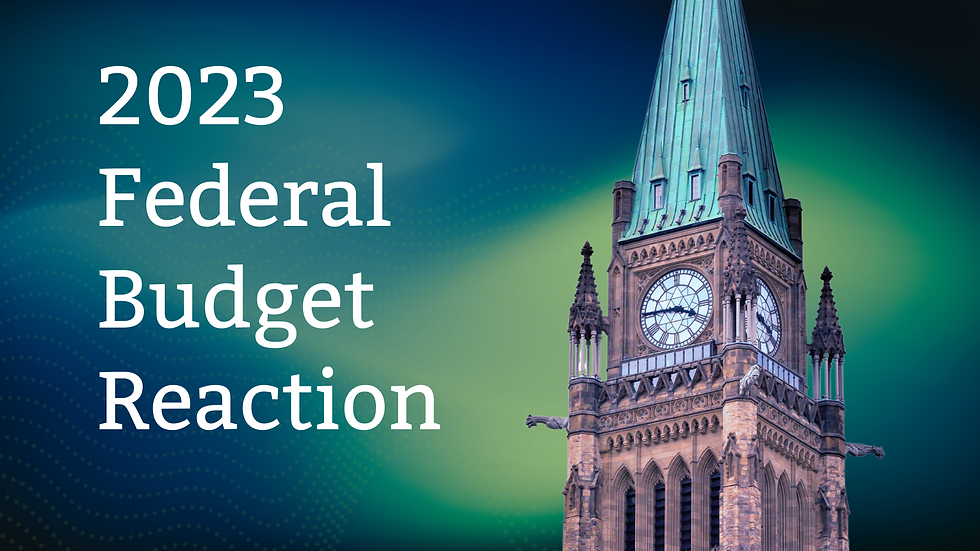Why Energy Efficiency is An Opportunity Alberta Can’t Afford to Pass Up
- Alison Cretney
- Jun 29, 2020
- 4 min read
As governments and industry around the world work to jump-start their economies and restart their businesses without triggering a second wave of COVID-19 infections, they’re suddenly open to ambitious ideas and policies that were on a slow track before the virus struck. But in straining for the highest fruit on the tree, we need to be careful that we don’t miss one of the easiest pieces to pick: energy efficiency. It will deliver results — and deliver them quickly. Installation of commercially available high-efficient technology saves more money than it costs, reduces emissions, and supports the local economy, producing high-quality local jobs while keeping investment in the community. But for too long, we’ve overlooked this opportunity. The good news is that now is the perfect time for that to change.
A 2019 study by Navigant Guidehouse gives us a glimpse into the economic upside of an investment in energy efficiency in Alberta. Under a scenario where $150 million is invested in energy efficiency programming, the potential electricity savings in buildings, and non-oil and gas industrial facilities would be around 1% per year, a figure that’s similar to electrical efficiency targets found in other jurisdictions in Canada and the United States. And while 1% per year may not sound like very much, this represents $290 million in private sector investment and $1 billion per year in gross savings. Energy efficiency benefits are cumulative, which means by 2040 we’d see savings of 20% or more. That spending, a portion of which could come from an existing carbon levy, would also offset 900 megawatts of electricity system capacity, making it easier — and less expensive — to green the grid.

So if the math is this compelling, why haven’t we put it to work already? In part, it’s because we haven’t put a price on the value it creates. For example, no matter what your opinion may be on its effectiveness, exposure to the carbon pricing concept has led to an awareness within government and industries of an implied value of carbon as a commodity. Commodities can then be bought, sold, and traded, creating a market and revenue stream. Products like renewables and geothermal already have “value.” In other words, there is a mechanism in place that puts a price on the outputs of those projects and is generally accepted by business and financial institutions. We have yet to do that for the output of energy efficiency.
If we did, it could be a game changer for business competitiveness in Alberta. That’s because it would help companies reduce their operating costs while increasing their resiliency to change and new challenges. This is important, given that our business sector was already facing competitiveness challenges from jurisdictions around the world before COVID hit. And while companies have recognized the value of incorporating environmental, social, and governance (ESG) factors into their corporate policies and business decisions, there are now (thanks to the economic impact of the virus) limited funds available for them to invest in energy efficiency opportunities. Without that additional investment, energy efficiency will remain unpicked fruit on the tree of opportunity.

Working to ensure this opportunity doesn’t get wasted is what inspired a partnership between the Energy Futures Lab and Energy Efficiency Alberta. This includes developing a rural small business pilot that makes energy efficiency improvements more accessible and financially viable. Working with municipalities to take the lead with an initiative that will offer Property Assessed Clean Energy (PACE) financing. And a new study that demonstrates the effectiveness of energy efficiency as a way to manage increased demand for electricity (which is anticipated to skyrocket with the electrification of the transportation system).
We’re not the only ones who see the opportunity that energy efficiency offers right now, either. The recently announced Task Force for a Resilient Recovery, which features a wide range of high-profile business and environmental leaders, also believes that energy efficiency should play a key role as we rebuild our economy and invest in “shovel-worthy” projects. Now, we need to act — and there are four key ways that we can enable an energy efficient economic recovery. First, we should explicitly recognize energy efficiency as a resource under the Electric and Gas Utilities Act. Second, we need to increase access to the Alberta emission offset market, and address administrative barriers to entry that currently exist for smaller projects. Third, we can incorporate energy efficiency into our utility system, and use it to offset or defer higher-cost generation, transmission and distribution alternatives. And finally, it’s time to support ESG reporting and give lending institutions and investors the ability to more fully value the benefits of energy efficiency in their risk assessments and valuations.

None of us would have chosen this current set of economic circumstances. The human and economic cost has been staggering. But as the world grapples with how to safely restart economies and move into recovery, we have a unique opportunity in Alberta to finally capture the value that energy efficiency can create for our industries, businesses, and institutions. If we do that, we’ll be that much closer to the prosperous and sustainable future that everyone wants to reach.




Comments